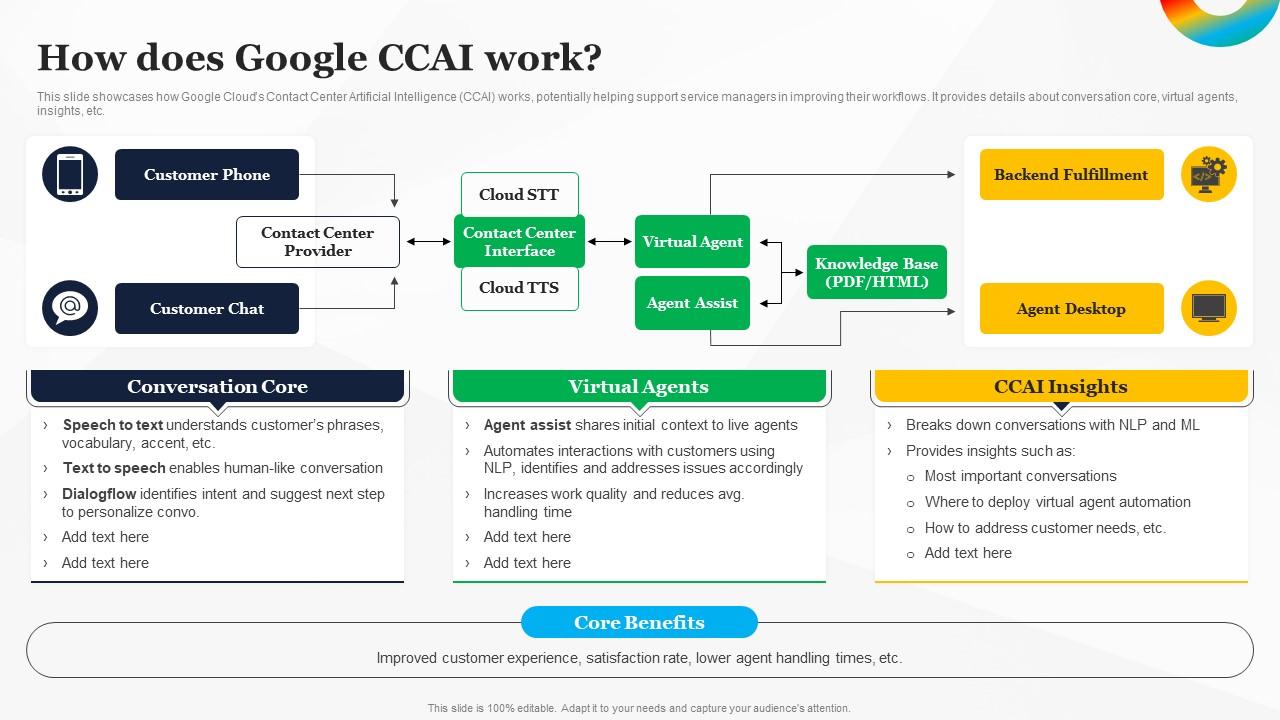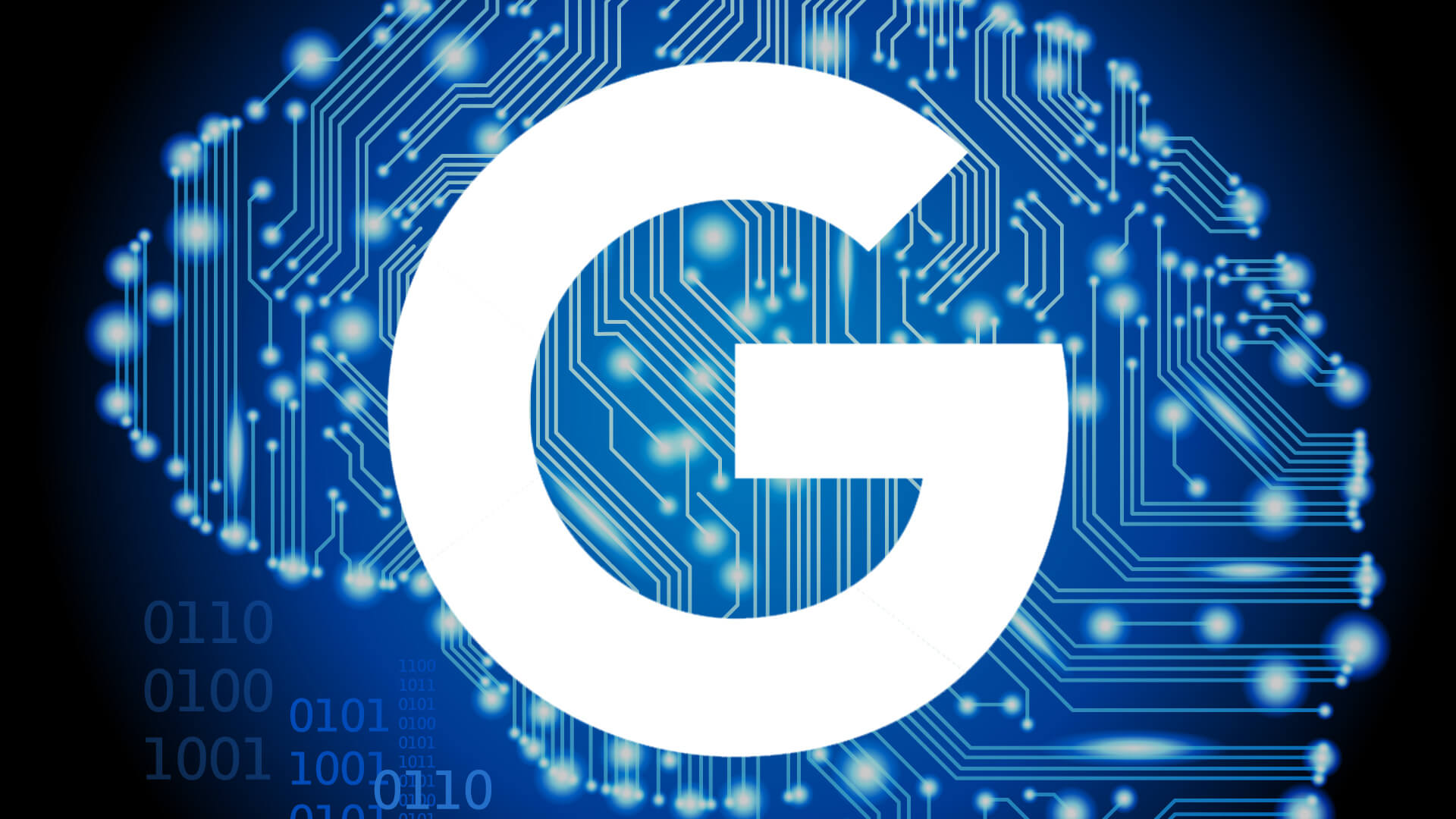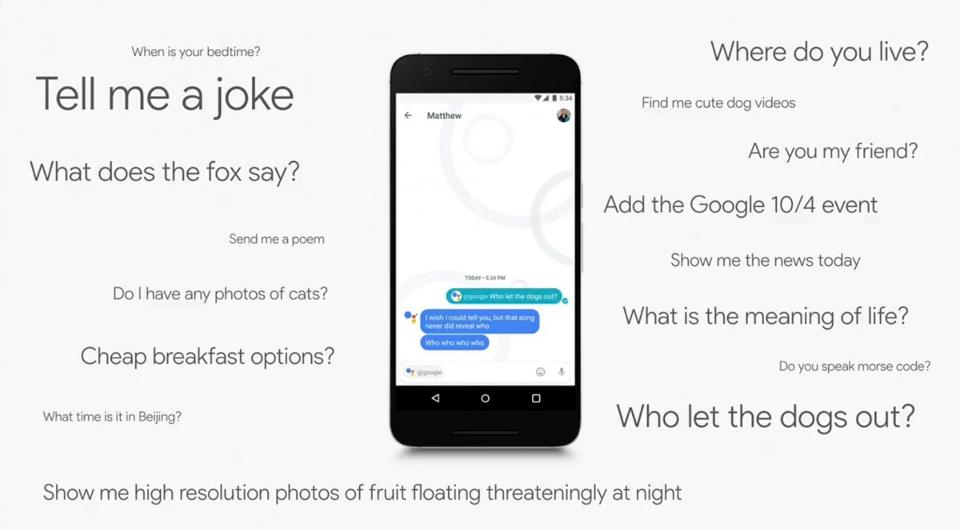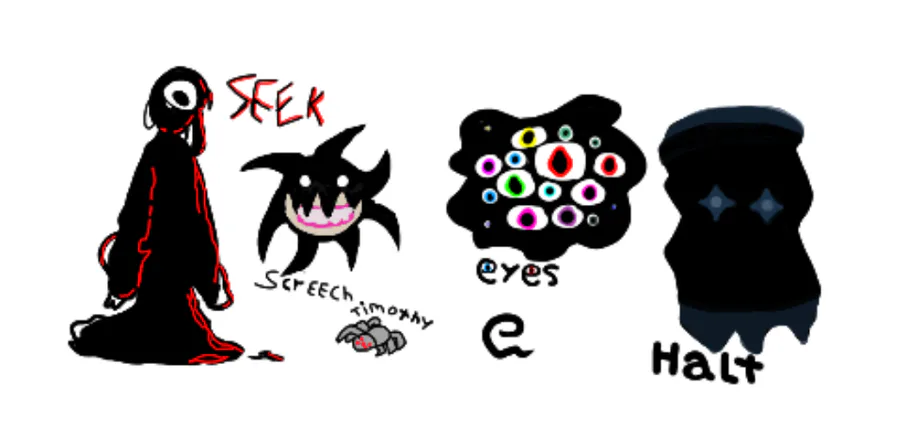How Google uses artificial intelligence In Goog
Por um escritor misterioso
Last updated 08 janeiro 2025

From RankBrain, Neural Matching, BERT and MUM - here is how Google uses AI for understanding language for query, content and ranking purposes. Barry Schwartz on February 3, 2022 at 12:00 pm
As Google continues to leverage more artificial intelligence and machine learning in Google Search, one may wonder in what ways does AI and machine learning help Google Search perform its daily tasks. Since 2015, when Google introduced its first AI into search named RankBrain, Google has continued to deploy AI systems to better understand language and thus improve the search results Google presents to its searches.
Several months ago we sent Google a number of questions around how Google uses its AI in search, including RankBrain, neural matching, BERT and Google’s latest AI breakthrough – MUM. We’ve come up with more of an understanding of when Google uses AI, which AI does what in Google Search, how these various AI algorithms may work together, how they have changed over the years and what, if anything, search marketers need to know when it comes to how Google uses AI in search.
We spoke with Danny Sullivan, the Public Liaison for Google Search, to help with the answers to many of these questions. In short, RankBrain, neural matching and BERT are used in Google’s ranking system across many, if not most, queries and look at understanding the language of both the query and content it is ranking. However, MUM is not currently used for ranking purposes, it is currently only used for COVID vaccine naming and powers the related topics in videos results. It starts by writing content for humans You hear it all the time from Google representatives and from many SEOs: write content for humans. In the older days of SEO, when the algorithms were maybe simpler, you would have many SEOs who would craft content for each and every search engine (back then there were dozens of different search engines). Now, there is primarily Google, with a little bit of Bing and some ruffling from DuckDuckGo – but the algorithms are much more complex and with machine learning and AI, the algorithms understand language more like a human would understand language.
So the advice Google has given is write for humans, and that you can’t optimize your site for BERT or any AI. If you write content that humans understand, then the algorithms and AI search engines use will also understand it. In short, this article is not aimed at trying to give you SEO tips on how to optimize your sites for any specific AI, but rather to communicate how Google uses AI in Google Search. Overview of AI used in Google Search RankBrain. It starts with RankBrain, Google’s first attempt at using AI in search dates back to 2015. Google told us RankBrain helps Google understand how words are related to concepts and can take a broad query and better define how that query relates to real-world concepts. While it launched in 2015 and was used in 15% of queries, Google said it is now, in 2022, widely used in many queries and in all languages and regions. RankBrain does specifically help Google rank search results and is part of the ranking algorithm. Year Launched: 2015 Used For Ranking: Yes Looks at the query and content language Works for all languages Very commonly used for many queries Here is an example provided by Google of how RankBrain is used, if you search for “what’s the title of the consumer at the highest level of a food chain,” Google’s systems learn from seeing those words on various pages that the concept of a food chain may have to do with animals, and not human consumers. By understanding and matching these words to their related concepts, RankBrain helps Google understand that you’re looking for what’s commonly referred to as an “apex predator.”
Neural matching. Neural matching was the next AI Google released for search, it was released in 2018 and then expanded to the local search results in 2019. In fact, we have an article explaining the differences between RankBrain and neural matching over here. Google told us neural matching helps Google understand how queries relate to pages by looking at the entire query or content on the page and understanding it within the context of that page or query. Today, neural matching is used in many, if not most, queries, for all languages, in all regions, across most verticals of search. Neural matching does specifically help Google rank search results and is part of the ranking algorithm. Year Launched: 2018 Used For Ranking: Yes Looks at the query and content language Works for all languages Very commonly used for many queries Here is an example provided by Google of how neural matching is used, if you search for “insights how to manage a green,” for example. Google said “if a friend asked you this, you’d probably be stumped.” “But with neural matching, we’re able to make sense of this quizzical search. By looking at the broader representations of concepts in the query — management, leadership, personality and more — neural matching can decipher that this searcher is looking for management tips based on a popular, color-based personality guide,” Google told us.
BERT. BERT, Bidirectional Encoder Representations from Transformers, came in 2019, it is a neural network-based technique for natural language processing pre-training. Google told us BERT helps Google understand how combinations of words express different meanings and intents, including looking at the sequence of words on a page, so even seemingly unimportant words in your queries are counted for. When BERT launched, it was used in 10% of all English queries but expanded to more languages and used in almost all English queries early on. Today it is used in most queries and is supported in all languages. BERT does specifically help Google rank search results and is part of the ranking algorithm. Year Launched: 2019 Used For Ranking: Yes Looks at the query and content language Works for all languages but Google said BERT “plays critical role in almost every English query” Very commonly used for many queries Here is an example provided by Google of how BERT is used, if you search for “if you search for “can you get medicine for someone pharmacy,” BERT helps us understand that you’re trying to figure out if you can pick up medicine for someone else. Before BERT, we took that short preposition for granted, mostly surfacing results about how to fill a prescription,” Google told us.
MUM. MUM, Multitask Unified Model, is Google’s most recent AI in search. MUM was introduced in 2021 and then expanded again at the end of 2021 for more applications, with a lot of promising uses for it in the future. Google told us that MUM helps Google not just with understanding languages but also generating languages, so it can be used to understand variations in new terms and languages. MUM is not used for any ranking purposes right now in Google Search but does support all languages and regions. Year Launched: 2021 Used For Ranking: No Not query or languages specific Works for all languages but Google not used for ranking purposes today Used for a limited number of purposes Currently, MUM is used to improve searches for COVID-19 vaccine information, and Google said it is “looking forward to offering more intuitive ways to search using a combination of both text and images in Google Lens in the coming months.” AI used together in search but may be specialized for search verticals Danny Sullivan from Google also explained that while these are individual AI-based algorithms, they often work together to help with ranking and understanding the same query.
Google told us that all of these AI systems “are used to understand language including the query and potentially relevant results,” adding that “they are not designed to act in isolation to analyze just a query or a page.” Previously, it may have been assumed and understood that one AI system may have looked more at understanding the query and not the content on the page, but that is not the case, at least not in 2022.
Google also confirmed that in 2022 RankBrain, neural matching, and BERT are used globally, in all languages that Google Search operates in.
And when it comes to web search versus local search versus images, shopping and other verticals, Google explained that RankBrain, neural matching, and BERT are used for web search. Other modes or verticals of Google Search such as images or shopping mode use separate, specialized AI systems, according to Google. What about core updates and AI As explained above, Google uses RankBrain, neural matching, and BERT in most queries you enter into Google Search, but Google also has core updates. The Google broad core updates that Google rolls out a few times per year is often noticed by site owners, publishers, and SEOs more than when Google releases these larger AI-based systems.
But Google said these all can work together, with core updates. Google said these three, RankBrain, neural matching, and BERT are the larger AI systems they have. But they have many AI systems within search and some within the core updates that Google rolls out.
Google told us they do have other machine learning systems in Google Search. “RankBrain, neural matching, and BERT are just some of our more powerful and prominent systems,” Google said. Google added, “there are other AI elements that can impact core updates that don’t pertain to those specific three AI systems.” | Metaglossia: The Translation World
As Google continues to leverage more artificial intelligence and machine learning in Google Search, one may wonder in what ways does AI and machine learning help Google Search perform its daily tasks. Since 2015, when Google introduced its first AI into search named RankBrain, Google has continued to deploy AI systems to better understand language and thus improve the search results Google presents to its searches.
Several months ago we sent Google a number of questions around how Google uses its AI in search, including RankBrain, neural matching, BERT and Google’s latest AI breakthrough – MUM. We’ve come up with more of an understanding of when Google uses AI, which AI does what in Google Search, how these various AI algorithms may work together, how they have changed over the years and what, if anything, search marketers need to know when it comes to how Google uses AI in search.
We spoke with Danny Sullivan, the Public Liaison for Google Search, to help with the answers to many of these questions. In short, RankBrain, neural matching and BERT are used in Google’s ranking system across many, if not most, queries and look at understanding the language of both the query and content it is ranking. However, MUM is not currently used for ranking purposes, it is currently only used for COVID vaccine naming and powers the related topics in videos results. It starts by writing content for humans You hear it all the time from Google representatives and from many SEOs: write content for humans. In the older days of SEO, when the algorithms were maybe simpler, you would have many SEOs who would craft content for each and every search engine (back then there were dozens of different search engines). Now, there is primarily Google, with a little bit of Bing and some ruffling from DuckDuckGo – but the algorithms are much more complex and with machine learning and AI, the algorithms understand language more like a human would understand language.
So the advice Google has given is write for humans, and that you can’t optimize your site for BERT or any AI. If you write content that humans understand, then the algorithms and AI search engines use will also understand it. In short, this article is not aimed at trying to give you SEO tips on how to optimize your sites for any specific AI, but rather to communicate how Google uses AI in Google Search. Overview of AI used in Google Search RankBrain. It starts with RankBrain, Google’s first attempt at using AI in search dates back to 2015. Google told us RankBrain helps Google understand how words are related to concepts and can take a broad query and better define how that query relates to real-world concepts. While it launched in 2015 and was used in 15% of queries, Google said it is now, in 2022, widely used in many queries and in all languages and regions. RankBrain does specifically help Google rank search results and is part of the ranking algorithm. Year Launched: 2015 Used For Ranking: Yes Looks at the query and content language Works for all languages Very commonly used for many queries Here is an example provided by Google of how RankBrain is used, if you search for “what’s the title of the consumer at the highest level of a food chain,” Google’s systems learn from seeing those words on various pages that the concept of a food chain may have to do with animals, and not human consumers. By understanding and matching these words to their related concepts, RankBrain helps Google understand that you’re looking for what’s commonly referred to as an “apex predator.”
Neural matching. Neural matching was the next AI Google released for search, it was released in 2018 and then expanded to the local search results in 2019. In fact, we have an article explaining the differences between RankBrain and neural matching over here. Google told us neural matching helps Google understand how queries relate to pages by looking at the entire query or content on the page and understanding it within the context of that page or query. Today, neural matching is used in many, if not most, queries, for all languages, in all regions, across most verticals of search. Neural matching does specifically help Google rank search results and is part of the ranking algorithm. Year Launched: 2018 Used For Ranking: Yes Looks at the query and content language Works for all languages Very commonly used for many queries Here is an example provided by Google of how neural matching is used, if you search for “insights how to manage a green,” for example. Google said “if a friend asked you this, you’d probably be stumped.” “But with neural matching, we’re able to make sense of this quizzical search. By looking at the broader representations of concepts in the query — management, leadership, personality and more — neural matching can decipher that this searcher is looking for management tips based on a popular, color-based personality guide,” Google told us.
BERT. BERT, Bidirectional Encoder Representations from Transformers, came in 2019, it is a neural network-based technique for natural language processing pre-training. Google told us BERT helps Google understand how combinations of words express different meanings and intents, including looking at the sequence of words on a page, so even seemingly unimportant words in your queries are counted for. When BERT launched, it was used in 10% of all English queries but expanded to more languages and used in almost all English queries early on. Today it is used in most queries and is supported in all languages. BERT does specifically help Google rank search results and is part of the ranking algorithm. Year Launched: 2019 Used For Ranking: Yes Looks at the query and content language Works for all languages but Google said BERT “plays critical role in almost every English query” Very commonly used for many queries Here is an example provided by Google of how BERT is used, if you search for “if you search for “can you get medicine for someone pharmacy,” BERT helps us understand that you’re trying to figure out if you can pick up medicine for someone else. Before BERT, we took that short preposition for granted, mostly surfacing results about how to fill a prescription,” Google told us.
MUM. MUM, Multitask Unified Model, is Google’s most recent AI in search. MUM was introduced in 2021 and then expanded again at the end of 2021 for more applications, with a lot of promising uses for it in the future. Google told us that MUM helps Google not just with understanding languages but also generating languages, so it can be used to understand variations in new terms and languages. MUM is not used for any ranking purposes right now in Google Search but does support all languages and regions. Year Launched: 2021 Used For Ranking: No Not query or languages specific Works for all languages but Google not used for ranking purposes today Used for a limited number of purposes Currently, MUM is used to improve searches for COVID-19 vaccine information, and Google said it is “looking forward to offering more intuitive ways to search using a combination of both text and images in Google Lens in the coming months.” AI used together in search but may be specialized for search verticals Danny Sullivan from Google also explained that while these are individual AI-based algorithms, they often work together to help with ranking and understanding the same query.
Google told us that all of these AI systems “are used to understand language including the query and potentially relevant results,” adding that “they are not designed to act in isolation to analyze just a query or a page.” Previously, it may have been assumed and understood that one AI system may have looked more at understanding the query and not the content on the page, but that is not the case, at least not in 2022.
Google also confirmed that in 2022 RankBrain, neural matching, and BERT are used globally, in all languages that Google Search operates in.
And when it comes to web search versus local search versus images, shopping and other verticals, Google explained that RankBrain, neural matching, and BERT are used for web search. Other modes or verticals of Google Search such as images or shopping mode use separate, specialized AI systems, according to Google. What about core updates and AI As explained above, Google uses RankBrain, neural matching, and BERT in most queries you enter into Google Search, but Google also has core updates. The Google broad core updates that Google rolls out a few times per year is often noticed by site owners, publishers, and SEOs more than when Google releases these larger AI-based systems.
But Google said these all can work together, with core updates. Google said these three, RankBrain, neural matching, and BERT are the larger AI systems they have. But they have many AI systems within search and some within the core updates that Google rolls out.
Google told us they do have other machine learning systems in Google Search. “RankBrain, neural matching, and BERT are just some of our more powerful and prominent systems,” Google said. Google added, “there are other AI elements that can impact core updates that don’t pertain to those specific three AI systems.” | Metaglossia: The Translation World

How to Use the New AI-Powered Features on Google Maps

Google Uses Artificial Intelligence to Detect Breast Cancer

Everything You Need to Know About How Google Does and

Announcing new generative AI experiences in Google Workspace

How Does Google CCAI Work How To Use Google AI For Your Business AI SS

Google Tests an A.I. Assistant That Offers Life Advice - The New York Times

5 things about AI you may have missed today: Google to use public info to train AI, tech layoffs, more

How Google is using AI to improve search, videos, and more with a focus on visuals

How does Google use AI?

How Does Google Use Artificial Intelligence (AI)? – CIOCoverage- Driven for Technology Leaders

How Google uses artificial intelligence In Google Search

How is Google Assistant using Artificial Intelligence AI
Google Duplex : A Smart Way of Interaction with Google Assistant
Recomendado para você
-
 The Great A.I. Awakening - The New York Times08 janeiro 2025
The Great A.I. Awakening - The New York Times08 janeiro 2025 -
 Traduza sua loja e aplicativos de terceiros com o Google08 janeiro 2025
Traduza sua loja e aplicativos de terceiros com o Google08 janeiro 2025 -
Glyphe - Tradutora e ferramenta de pesquisa08 janeiro 2025
-
Fathomers Los Angeles CA08 janeiro 2025
-
Smartbis Florianópolis SC08 janeiro 2025
-
 Bola Branca Controlar Atalhos Secretos: Maneiras08 janeiro 2025
Bola Branca Controlar Atalhos Secretos: Maneiras08 janeiro 2025 -
 646 questions with answers in GOOGLE08 janeiro 2025
646 questions with answers in GOOGLE08 janeiro 2025 -
 Tradutor de idiomas online tradução de bolhas de bate-papo para08 janeiro 2025
Tradutor de idiomas online tradução de bolhas de bate-papo para08 janeiro 2025 -
 Realme-GT Master Explorer Edition Smartphone, 5G, Snapdragon 87008 janeiro 2025
Realme-GT Master Explorer Edition Smartphone, 5G, Snapdragon 87008 janeiro 2025 -
How to Use CAD and CAM in Mechanics: A Guide08 janeiro 2025
você pode gostar
-
 AD VIVO REAGINDO COISAS DE TERROR 42 I BY: LUANA Jounin React - 88 assistindo - iFunny Brazil08 janeiro 2025
AD VIVO REAGINDO COISAS DE TERROR 42 I BY: LUANA Jounin React - 88 assistindo - iFunny Brazil08 janeiro 2025 -
 Trends International Five Nights at Freddy's Movie - Foxy One Sheet Wall Poster, 14.72 x 22.37, Premium Poster & Push Pin Bundle08 janeiro 2025
Trends International Five Nights at Freddy's Movie - Foxy One Sheet Wall Poster, 14.72 x 22.37, Premium Poster & Push Pin Bundle08 janeiro 2025 -
actualicaciones adopt me|TikTok Search08 janeiro 2025
-
 TESTANDO POKEMON! SHINY GENGAR- POKEMON BR08 janeiro 2025
TESTANDO POKEMON! SHINY GENGAR- POKEMON BR08 janeiro 2025 -
 Everything FIFA 23: Release Date & More08 janeiro 2025
Everything FIFA 23: Release Date & More08 janeiro 2025 -
2023 UEFA Women's Champions League Final: Barcelona beat Wolfsburg 3-2 to win their second Champions League title08 janeiro 2025
-
 creativity-lol real on Game Jolt: more monster of door game08 janeiro 2025
creativity-lol real on Game Jolt: more monster of door game08 janeiro 2025 -
ESCAPE DA TIA BETH MALVADA E SEU IRMÃO BEN!! BETTY'S NURSERY ESCAPE08 janeiro 2025
-
 CODA (2021 film) - Wikipedia08 janeiro 2025
CODA (2021 film) - Wikipedia08 janeiro 2025 -
 SCP Foundation T-shirt : Clothing, Shoes & Jewelry08 janeiro 2025
SCP Foundation T-shirt : Clothing, Shoes & Jewelry08 janeiro 2025





